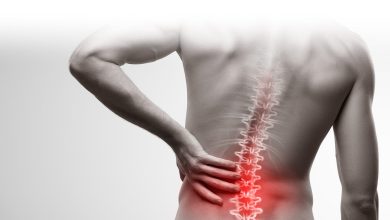Shoulder Pain: What is it, What are the Types, and How Can You Treat It?
Shoulder Pain

Shoulder pain can be challenging to understand because it can have many causes and occur in many areas of the shoulder. While a few types of shoulder pain are standard, and you shouldn’t worry too much about them, others should never be ignored and can lead to severe problems if they aren’t treated right away. In this guide, we’ll take an in-depth look at the different causes of shoulder pain, their symptoms, and how they should be treated so that you can get back to living your life without being concerned about your shoulder problems.
Common Symptoms
The two most common types of shoulder pain are Posterior Shoulder Pain and Shooting (radiating) shoulder pain. Posterior Shoulder Pain can be described as a dull ache that gets more intense when you move your arm backward. Casting or Shooting shoulder pain can be described as a sharp pain that shoots down the arm into the elbow or wrist. Less common forms of shoulder pain include Burning shoulder pain, Aching shoulder pain, Warm or burning shoulder pain, and Sharp shoulder pains.
The Different Types of Shoulder Pain
There are a few different types of shoulder pain that people can experience. You may feel warm or burning shoulder pain in a single spot on your shoulder or throughout most of your upper back. Shooting (radiating) shoulder pain may be experienced as intermittent pains that happen suddenly or gradually over time.
Frozen Shoulder
If you’ve been suffering from aching or sharp shoulder pain for at least six months, your condition may be referred to as a frozen shoulder. Frozen shoulder syndrome, more formally known as adhesive capsulitis (capsulitis means inflammation of the joint capsule), causes severe pain when moving the affected joint due to stiffness in the capsule surrounding the joints. Capsular contracture tightens around a joint with no flexibility.
Rotator Cuff Injury
A rotator cuff injury occurs when one or more of the tendons that attach to your shoulder bone become strained or torn. Symptoms include an aching shoulder pain that may start gradually but worsen with use. The pain usually subsides at night, but during the day, you may need to stop activities like swimming because of the pain. Surgery is often necessary to repair a rotator cuff injury—though if left untreated for too long, recovery can be difficult.
Bursitis in the Shoulder
Bursitis can be caused by overuse or any other activity that puts repeated stress on your shoulder. Activities like computer work or vacuuming, which require you to repeatedly move your arms overhead with outstretched elbows, can lead to bursitis. Treatment for bursitis includes resting from activities that aggravate the condition. You may also use ice packs to reduce inflammation and pain.
Calcific Tendonitis (Tennis Elbow)
These conditions are often caused by overuse or injury to the shoulder. Tendinitis is inflammation of a joint’s tendon that can be caused by repetitive motion. Tendinitis causes soreness in a joint or tendon and sometimes the tendon or muscle swelling. Calcific tendinitis occurs when crystals form inside the body and calcify on joints which causes pain.
Carpal Tunnel Syndrome
Carpal Tunnel Syndrome is a common cause of shoulder pain that can radiate into the arm or hand. This occurs when there is pressure on your median nerve. One of the leading causes of Carpal Tunnel Syndrome is repetitive movements with gripping and bending fingers (like typing) and direct trauma to the wrist area. One way to avoid Carpal Tunnel Syndrome, in general, is to take breaks while doing tasks that involve a lot of motion with your hands.
Read also: Stairmaster Benefits and How They Can Improve Your Health
Sprains or Strains in the Muscles that Move your Arm & Hand
A sprain or strain in the muscles that move your arm and hand could be caused by many things. They include but are not limited to high demand or overuse of those muscles from sports or work activities. A fall on an outstretched hand could also lead to a sprained muscle (such as when skiing). Often, these injuries can heal without long-term consequences, but they may sometimes result in chronic pain.




